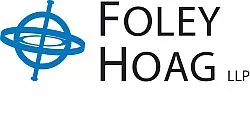"Be creative!" is an important piece of advice which you often hear from European trademark lawyers. Today, more than ever, this recommendation should be taken seriously. The reason is very simple: the Community trademark office is increasingly stringent towards marks that consist of verbal messages. A recent case provides a good example:
A French company, Intervog, is the owner of two figurative
community trademarks, ![]() ("date me") and
("date me") and ![]() ("snog me"), both registered in 2012
for, among other services, "personal and social assistance
for individuals for creating, managing and extending their own
social network" in
class 45. Each mark is composed of two simple words evocative
of Intervog's activity. Likely aware that the words alone would
probably not be sufficiently distinctive, Intervog employed the old
trick of adding figurative elements, in this case the use of a
specific typography.
("snog me"), both registered in 2012
for, among other services, "personal and social assistance
for individuals for creating, managing and extending their own
social network" in
class 45. Each mark is composed of two simple words evocative
of Intervog's activity. Likely aware that the words alone would
probably not be sufficiently distinctive, Intervog employed the old
trick of adding figurative elements, in this case the use of a
specific typography.
But this trick didn't work a third time when, on November
24, 2015, Intervog's attempt to register the figurative
community trademark ![]() ("meƏt me") for the same kind of services was
refused by the General Court.
("meƏt me") for the same kind of services was
refused by the General Court.
The ground cited for the refusal by the General Court is well-established: a trade mark must be distinctive and, for the purposes of Article 7(1)(b) of Regulation No 207/2009, this means that it must serve to identify the goods or services in question as originating from a particular undertaking, thus distinguishing those goods or services from those of other undertakings. Here, the General Court held that the "meƏt me" mark "conveys a simple and banal promotional message . . . and the relevant public, confronted with that mark, would probably not perceive, beyond the promotional message that such products and services facilitate the meeting between consumers through IT tools, any indication as to the commercial origin of those products and services."
The General Court also rejected Intervog's argument that the mark was "fanciful," finding that it merely "consists of the two English words "meet" and "me" ... a combination of words which complies with the syntactic and customary rules of the English language." Moreover, the Court found that the color, font and inversion of the second letter "e" "do not allow the mark to deviate from the simple perception of the two verbal elements used, namely "meet" and "me."" The Court concluded "that the mark . . . does not require an effort of interpretation, even a minimal one, nor triggers cognitive processes of the relevant public, but is reduced to a simple usual promotional message according to which the goods or services covered by the mark allow consumers to meet."
In other words, the marketing people had not been sufficiently
creative. This judgment is in line with the most recent European
case law. More and more, trademarks are rejected on the ground that
they lack distinctiveness. However, one can wonder why ![]() ("date me") and
("date me") and ![]() ("snog me"), were registered, whereas
("snog me"), were registered, whereas
![]() ("meƏt me") did not meet
the test. Is it just because the decision on the third mark was
made by a different trademark examiner, who had a different sense
of creativity than whoever examined the first two marks? It's
not a very satisfactory answer in terms of legal certainty and
predictability, but it's probably the right one.
("meƏt me") did not meet
the test. Is it just because the decision on the third mark was
made by a different trademark examiner, who had a different sense
of creativity than whoever examined the first two marks? It's
not a very satisfactory answer in terms of legal certainty and
predictability, but it's probably the right one.
To view Foley Hoag's Trademark and Copyright Law Blog please click here
The content of this article is intended to provide a general guide to the subject matter. Specialist advice should be sought about your specific circumstances.


